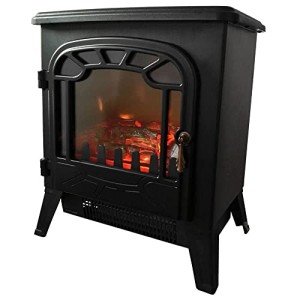A Comprehensive Guide to Small Fireplaces: Efficient Heating and Cozy Living
In a period where energy efficiency and space optimization are becoming significantly important, small fireplaces have actually become an enticing alternative to traditional, large hearths. These compact heating solutions use heat and a centerpiece for any space, heightening both comfort and aesthetic appeal. This short article explores the different kinds of small fireplaces, their advantages, setup considerations, and upkeep suggestions, ultimately helping property owners make notified decisions when thinking about these captivating heating options.
Understanding Small Fireplaces
Small fireplaces use a variety of styles, including electric, gas, ethanol, and wood-burning models. Each type presents special benefits and design possibilities, making them ideal for numerous living spaces.
Types of Small Fireplaces
| Fireplace Type | Description | Pros | Cons |
|---|---|---|---|
| Electric | Uses electrical energy to create heat. Offers many styles, consisting of wall-mounted and freestanding systems. | - Easy to set up - Low upkeep - No venting required | - Limited heat output - May incur greater electrical power expenses |
| Gas | Burns natural gas or lp. Typically readily available as logs in a traditional fireplace or modern designs. | - Efficient heat output - Cleaner than wood - Easy ignition | - Requires gas line setup - Some systems need venting |
| Ethanol | Burns bioethanol, providing real flames without a chimney. | - Eco-friendly - Portable - No setup needed | - Limited heat output - Higher fuel expenses |
| Wood-Burning | Traditional fireplaces that burn fire wood. Often utilized in more rustic settings. | - Great heat output - Rich ambiance - Can be utilized during power outages | - Requires a chimney - Regular upkeep and cleaning |
Advantages of Small Fireplaces
- Area Efficiency: Small fireplaces are ideal for homes, condominiums, and smaller homes. They make the most of heat without using up excessive flooring space.
- Cost-Effective Heating: In particular cases, small fireplaces can supplement central heating systems, minimizing overall energy expenses while creating a more comfy environment.
- Ambiance and Aesthetics: They provide an inviting centerpiece to a space, creating a cozy environment best for relaxation and celebrations.
- Versatility: Available in numerous designs and styles, small fireplaces can match any decoration, from modern minimalist to rustic traditional.
Installation Considerations
When pondering a small fireplace, installation is a crucial factor that can affect the choice of design. Below are handy considerations:
- Local Regulations: Building codes can vary by location; always inspect local standards before setup.
- Ventilation Needs: Depending on the type, small fireplaces might need different ventilation systems. linked webpage may require venting outdoors, while electric designs do not.
- Power Source: Electric models require proximity to electric outlets, while gas and ethanol designs might need a gas line or fuel storage.
- Weight and Structure: Installing wall-mounted units may need enhanced wall locations, whereas free-standing models are much easier to move.
Maintenance Tips
Like any other home appliance, small fireplaces require regular upkeep to function effectively and safely. Here are important upkeep suggestions for various fireplace types:
For Electric Fireplaces:
- Cleaning: Wipe down the system with a soft fabric to get rid of dust and keep the heating system ducts clear.
- Evaluation: Check the power cord regularly for any damages or signs of wear.
For Gas Fireplaces:
- Annual Inspections: Schedule annual evaluations by an expert to guarantee safe gas circulation.
- Clean the Logs: Regularly clean the burner and logs to keep optimal efficiency.
For Ethanol Fireplaces:
- Fuel Storage: Store ethanol fuel safely far from direct sunlight and heat sources.
- Routine Cleaning: Clean the burner after each use to maintain effectiveness and prevent soot buildup.
For Wood-Burning Fireplaces:
- Chimney Sweeping: Have the chimney professionally cleaned up when a year to avoid creosote accumulation.
- Fire wood Storage: Only use dry, seasoned wood to lessen smoke and promote effective burning.
Regularly Asked Questions
1. Can I install a small fireplace myself?
While some electric and ethanol fireplaces are relatively simple to install, it is a good idea to employ an expert for gas and wood-burning systems to ensure compliance with regional building codes.
2. Just how much does it cost to run a small fireplace?
The cost will vary depending on the type of fireplace. Usually, electric fireplaces may sustain higher electrical energy expenses, while wood-burning alternatives can draw from sustainable fire wood products.
3. Do I require a permit for installation?
Authorizations are usually required for gas and wood-burning fireplaces due to their setup intricacy and security regulations. Constantly examine with regional authorities.
4. How long can I run an electric fireplace?
Most electric fireplaces can run for long durations; however, it's advised to follow manufacturer guidelines to avoid getting too hot or harming the unit.
5. What type of small fireplace is best for a small space?
This mostly depends on individual requirements. Fireplace UK are versatile and easy to set up, while gas and ethanol choices supply real flames with efficient heat output.
Small fireplaces represent a practical and stylish option for those seeking effective heating options in compact home. With numerous types readily available, property owners can select models that line up with their visual choices and space requirements. By understanding the setup processes and regular upkeep required, people can enjoy the comfort and ambiance that small fireplaces offer for years to come. Whether for a cozy night at home or a welcoming space for events, small fireplaces are an enduring component of modern and traditional decor alike.

